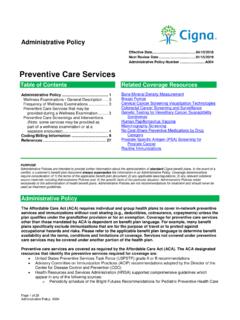Transcription of Preventive Services Guide 2015 - New York State Office of ...
1 Preventive Services Practice Guidance Manual Revised 2015 This document is provided under a contractual agreement between the New York State Office of Children and Family Services Division of Administration Bureau of Training and Development and Welfare Research, Inc. (WRI) Acknowledgement This material was developed by WRI under a training and administrative Services agreement with the New York State Office of Children and Family Services . Disclaimer While every effort has been made to provide accurate and complete information, the Office of Children and Family Services and the State of New York assume no responsibility for any errors or omissions in the information provided herein and make no representations or warranties about the suitability of the information contained here for any purpose.
2 All information and documents are provided as is, without a warranty of any kind. Copyright 2015 by the New York State Office of Children and Family Services Table of Contents Chapter 1: What are Preventive Services ? .. 1-1 Preventive Services and child welfare .. 1-1 Mandated Preventive Services .. 1-2 Mandated-only Preventive 1-3 Community Optional Preventive Services (COPS) .. 1-5 Nondiscrimination .. 1-6 Reasonable efforts .. 1-6 Legal requirements .. 1-6 Preventive Services as reasonable efforts .. 1-7 Chapter 2: Eligibility for Preventive Services .. 2-1 Mandated Preventive Services .. 2-1 Eligibility criteria .. 2-2 Mandated-only Preventive Services .
3 2-5 Preventive housing Services .. 2-5 Respite care and Services for families .. 2-7 Chapter 3: Persons in Need of Supervision (PINS) and Juvenile Delinquents (JDs) .. 3-1 Persons in Need of Supervision (PINS) .. 3-1 PINS diversion Services ..3-2 Filing the PINS petition .. 3-3 Court hearings .. 3-3 Juvenile Delinquents .. 3-4 JD proceedings .. 3-4 Sharing information .. 3-6 Case management .. 3-6 Documentation .. 3-7 Chapter 4: The Preventive Services Team .. 4-1 Case manager .. 4-1 Case planner .. 4-2 Caseworker .. 4-3 Other service program personnel .. 4-4 Foster care .. 4-4 Disrupted and dissolved adoptions .. 4-5 Child Protective Services .. 4-6 Family Court.
4 4-7 Court orders for Preventive Services .. 4-8 Opening a Preventive Services case in CONNECTIONS .. 4-8 Chapter 5: Culturally Competent Services .. 5-1 Importance of cultural competence in child welfare .. 5-1 Becoming culturally competent .. 5-2 Cultural competency skills for caseworkers .. 5-3 A more diverse child welfare workforce .. 5-4 Cultural and ethnic background .. 5-5 Tips for cross-cultural communication .. 5-5 Race and racism .. 5-6 Gender identity and sexual orientation .. 5-8 Religion and spirituality .. 5-9 Chapter 6: First Meeting and Initial Assessment .. 6-1 Forming a partnership .. 6-1 Preparing for the initial visit .. 6-2 During the initial visit.
5 6-4 Special Considerations .. 6-6 Possible child abuse or maltreatment .. 6-6 Hygiene and cleanliness .. 6-6 Domestic violence .. 6-7 Interviewing adolescents .. 6-7 Absent family .. 6-7 Families that don t follow through .. 6-7 Indications of child trafficking .. 6-8 Incarcerated parents .. 6-8 The Initial Family Assessment and Service Plan .. 6-8 Family assessment .. 6-9 Service Plan .. 6-9 Preventive Services standards .. 6-10 Chapter 7: Family Assessment: Safety and Risk .. 7-1 Safety Assessment .. 7-1 Non-CPS safety issues .. 7-2 Safety factors .. 7-2 Applying the safety 7-7 Safety decision .. 7-8 Safety Plan .. 7-9 Controlling interventions .. 7-10 Documenting the safety assessment.
6 7-11 Assessing risk of abuse/maltreatment .. 7-11 Risk Assessment Profile .. 7-11 The RAP family 7-12 Risk elements .. 7-13 Identification of abuse and/or maltreatment .. 7-14 Child maltreatment .. 7-15 Child abuse .. 7-16 Chapter 8: Family Assessment: Strengths and Needs .. 8-1 Family Scales .. 8-2 Child Scales .. 8-2 Parent/Caretaker Scales .. 8-2 Underlying conditions: Community and culture ..8-3 Underlying conditions: Heredity and Underlying conditions: Poverty ..8-4 Contributing factors: Mental illness ..8-4 Contributing factors: Traumatic experiences .. 8-6 Contributing factors: Incarcerated parents .. 8-6 Contributing factors: Developmental disabilities.
7 8-7 Chapter 9: Casework Contacts & Family Team Meetings .. 9-1 The Family Assessment and Service Plan (FASP) .. 9-1 Goals and timelines .. 9-2 Casework contacts .. 9-3 Who can make a casework contact? .. 9-3 Frequency and location of casework contacts .. 9-4 Documenting casework contacts .. 9-5 Families receiving other Services .. 9-6 Family team meetings .. 9-6 Preparing for the meeting .. 9-7 Format of the meeting .. 9-7 Special considerations .. 9-8 Cross-cultural issues .. 9-8 Domestic violence .. 9-8 Confidentiality .. 9-8 Advocates Preventive Only (ADVPO) cases .. 9-10 Outside agencies providing Services .. 9-10 Probation Services .. 9-10 Law enforcement .. 9-11 HIV-related information.
8 9-11 Written consent .. 9-11 Chapter 10: Reassessment FASP .. 10-1 The process of change .. 10-1 Reassessment FASP .. 10-1 Safety Assessment .. 10-1 Family update .. 10-2 Case update .. 10-2 Legal activity .. 10-2 Family strengths, needs, and risks .. 10-2 Risk Assessment Profile .. 10-3 Analysis .. 10-3 Service Plan Review .. 10-3 Programmatic eligibility .. 10-4 Plan Amendments .. 10-4 Recertification of mandated Preventive Services .. 10-4 Child in foster care .. 10-5 Child in designated emergency foster family boarding home .. 10-5 Preventive Housing Services .. 10-5 Chapter 11: Closing the Case .. 11-1 Progress toward Service Plan goals .. 11-1 Development of family behaviors and skills.
9 11-1 Access to support and resources .. 11-2 Preparing the family .. 11-2 Required case closings .. 11-2 Termination of Preventive Housing Services .. 11-3 Conferences and fair hearings .. 11-3 Closing a case in CONNECTIONS .. 11-4 Appendices Chapter 1 What are Preventive Services ? Page | 1-1 OCFS Preventive Services Practice Guidance Manual | September 2015 Chapter 1 What are Preventive Services ? Preventive Services strengthen families: they help parents and caregivers provide an environment where children can thrive. Like Preventive health care, these Services address early symptoms of family problems that, if left untreated, may result in a breakdown of the family unit.
10 According to New York State Social Services Law (SSL 409), Preventive Services are supportive and rehabilitative Services that are provided to children and their families for the purpose of: Averting an impairment or disruption of a family which will or could result in the placement of a child in foster care; Enabling a child who has been placed in foster care to return to his family at an earlier time than would otherwise be possible; or Reducing the likelihood that a child who has been discharged from foster care would return to such care. Generally, Preventive Services are provided to families with children under the age of 18, because only children under 18 may be at risk of placement into foster care.
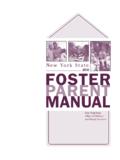
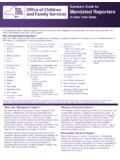
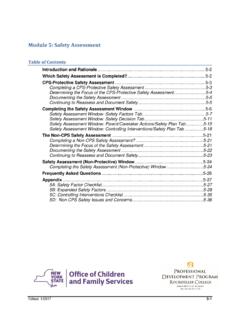
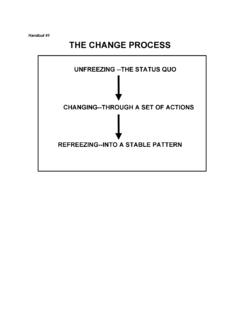

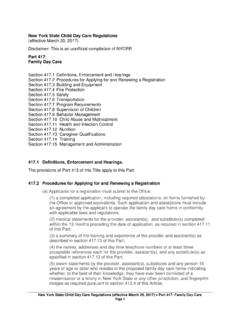


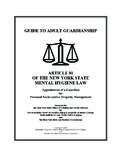
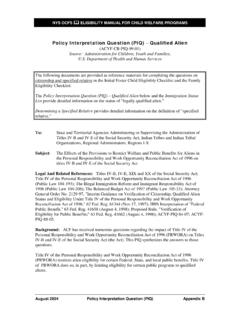
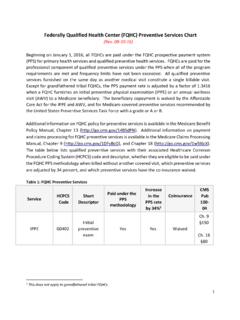

![section 223(c)(2)(C), “[a] plan shall not fail to be ...](/cache/preview/e/7/c/9/5/c/c/c/thumb-e7c95ccc145b80a42e813d5d01bee6a3.jpg)
